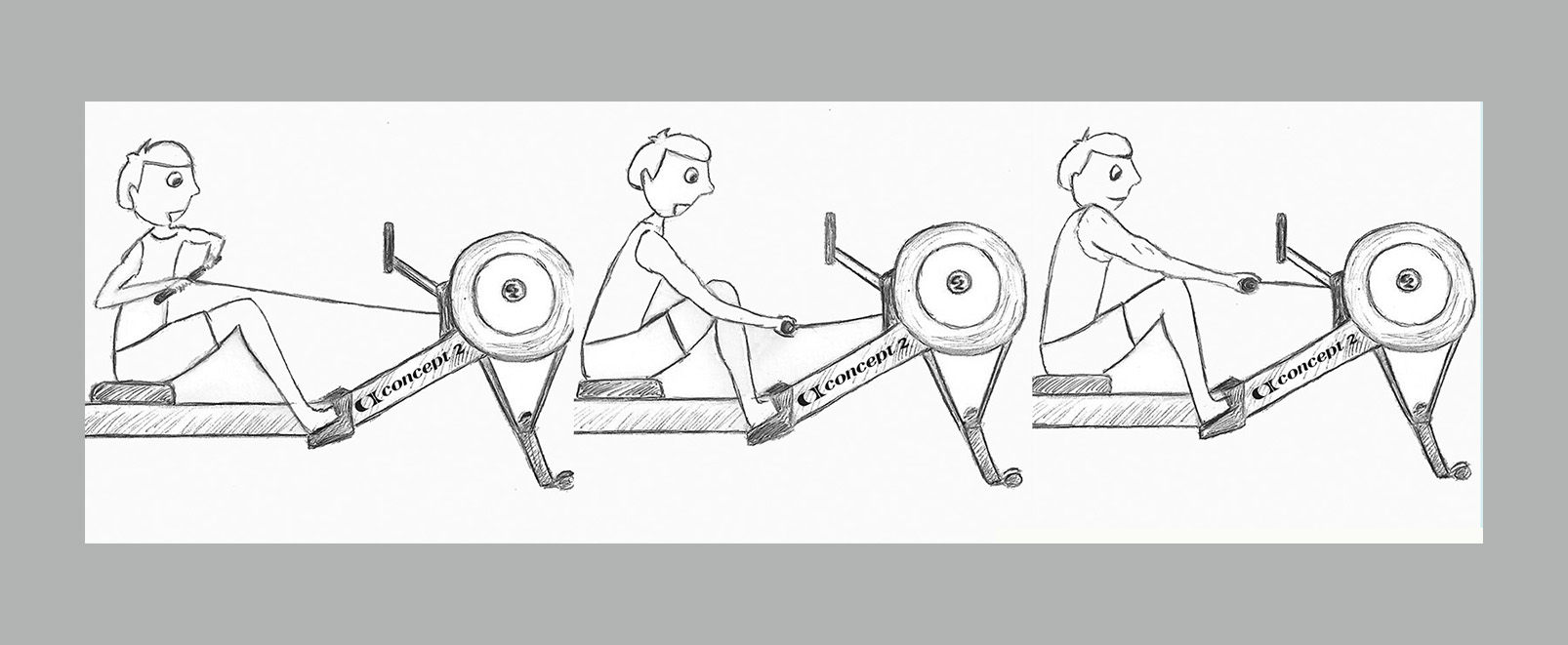- Track your orders
- Save your details for express checkout
Blog
Three Common Technique Mistakes On The Indoor Rower
Like any skill, Indoor Rowing technique is an ongoing work in progress. Very few rowers row ‘perfectly’ and the ones that do (or at least come close) have to remain vigilant to make sure bad habits don’t start to creep in. With that in mind, we look at three common technical mistakes that Indoor Rowers make and give some tips for things to focus on to fix them!
1. Breaking the Knees Too Early
 How not to do it: don't let the handle get caught between your knees and your body.
How not to do it: don't let the handle get caught between your knees and your body.
Breaking the knees too early on the recovery is a common mistake, if you find you are having to lift the handle of the rowing machine over your knees on the recovery- this could be you! The recovery phase of the rowing stroke should follow the same pattern as the drive phase- but in reverse. Once the stroke finishes the first movement of the recovery is to allow the hands to flow forward until your arms are nearly straight. As the arms begin to straighten, the body tilts over bringing your bodyweight onto the front of the seat. It is only at this point that your knees start to bend, and you begin a steady roll into the catch. Getting the sequence of movements out of the finish of the stroke right is very important to maintaining good technique throughout your rowing stroke, and your body position should not change as you roll into the catch. Always make sure your handle clears your knees before you begin to roll forward on the slide- this is a good way of ensuring you are setting up your stroke in the correct sequence. For more on the recovery phase of the rowing stroke click here.
2. Dropping the Handle at The Catch

How not to do it: Don't let your handle drop in front of your shins at the catch
Dropping the handle into the catch or taking the catch with the handle too low is another common technique error that is easy to make. Often, the reason for the low handle position begins earlier in the stroke (especially if you have already made mistake number 1!). Ideally, once the handle clears the knees it should track fractionally upwards as you roll into the catch, so that it is around knee height as you begin to drive backwards. Rowers who drop the handle low at the catch often seem to allow the handle to follow the shins downwards at the front of the stroke. The problem with this, is that it affects correct body position, causing the rower to sit too upright rather than allowing the body to properly tilt forward. As a result, the effective part of the rowing stroke is shortened, and the drive is initiated by the back opening instead of the leg drive- a much weaker driving technique. To avoid this technical mistake, keep your arms loose and straight as you roll into the catch, and make sure your handle level doesn’t drop much below your knees.
3. Bracing Through the Shoulders and Arms at The Catch

How not to do it: It may make your arms look big, but bracing the shoulders at the catch is detracting from your leg drive
It can be tempting to want to put everything into the drive from the get-go: arms, shoulders, back, legs- the whole lot! But using your arms before its their turn in the sequence is a common technical mistake in rowing. We’ve all heard the correct sequence of the drive phase (if you haven’t check out this article!) It begins with the catch, where the resistance is taken by the lats, core and lower back connecting to the legs. The legs drive first, followed by the body-swing with the arms finishing the stroke. In making the mistake of bracing in the shoulders and the arms first, pressure is taken off the legs reducing the effectiveness of the drive. As the stroke continues and you move into the draw into the finish, this is also significantly diminished as the arms have already been used at the catch. This makes for a very inefficient stroke, where energy is expended in the shoulders and arms unnecessarily at the catch, while also limiting the effectiveness of the leg drive- the major muscle group you are trying to utilize!
A good way to try to make sure you are not bracing in the shoulders and arms at the catch, is to think about having a tall neck with lots of space between your ears and your shoulders. Let your arms remain loose as you roll into the catch and focus on taking the initial pressure on the drive in your lats, core and lower back, connecting through to your legs.


 Please wait
Please wait